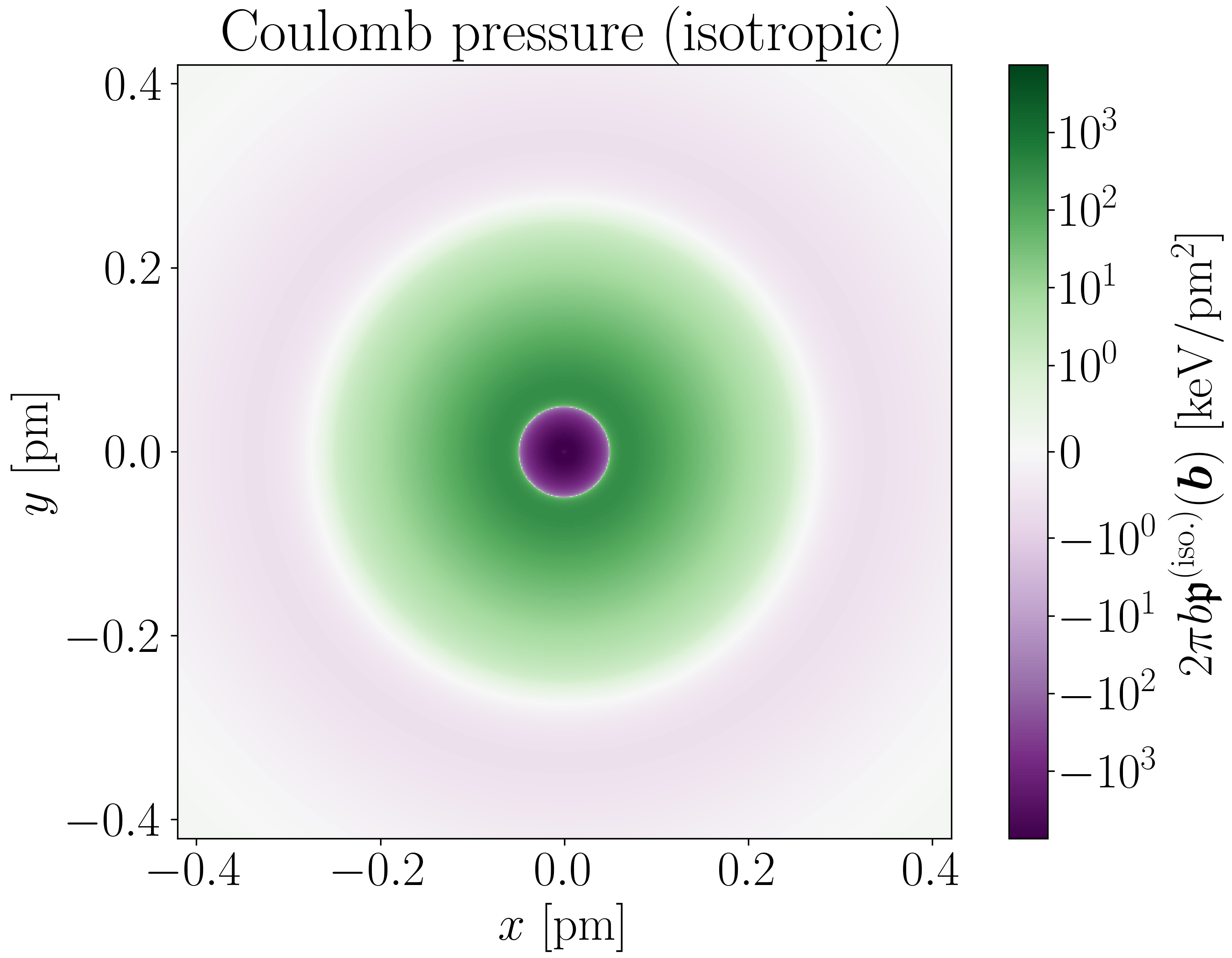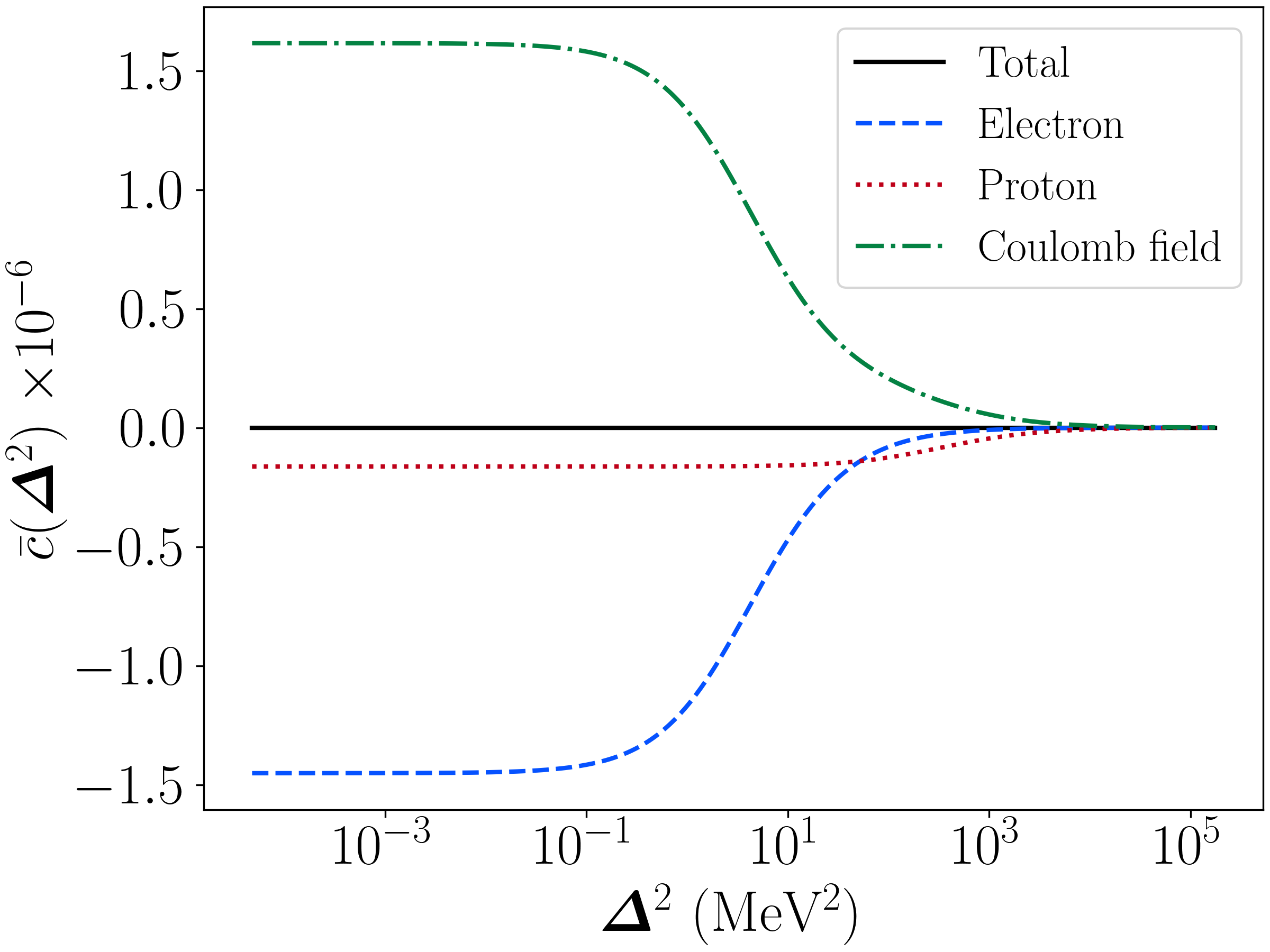 This work studies how stresses and momentum flow operate in bound quantum systems, with special attention paid to how stresses induced by the wave function guide particle motion. This study additionally shows how mechanical form factors—which are extracted from the quantum correlation functions measured at JLab and the EIC—can be used to image forces in bound quantum systems. The hydrogen atom is used as a case study, and it is shown that the mechanical form factors allow the Coulomb force law to be mapped out.
This work studies how stresses and momentum flow operate in bound quantum systems, with special attention paid to how stresses induced by the wave function guide particle motion. This study additionally shows how mechanical form factors—which are extracted from the quantum correlation functions measured at JLab and the EIC—can be used to image forces in bound quantum systems. The hydrogen atom is used as a case study, and it is shown that the mechanical form factors allow the Coulomb force law to be mapped out.
Background
Mechanical form factors—which are extracted from high-energy particle collisions at Jefferson Lab and the future Electron Ion Collider—are commonly believed to encode stresses in hadrons. A variety of high-profile publications from Jefferson Lab have claimed to measure pressure in the proton, including individual contributions from quarks and from gluons. On the other hand, some researchers have questioned whether these form factors really encode pressure and stresses. This study investigates whether the mechanical form factors really encode stresses, and ultimately validates the pressure interpretation that is widely believed by researchers in the field.
The Science
This study begins by evaluating the average momentum flux density—that is, the average rate at which momentum is flowing, as a function of space and time—for bound quantum systems prepared in an arbitrary wave packet. This density can be directly related to the mechanical form factors measured in particle collision experiments through a Fourier transform. The average momentum flow contains a mixture of contributions: from the movement of the system as a whole, from dispersion of the wave packet it is prepared in, from movement of constituents inside the system, and from forces acting on constituents.
Next, the study uses guidance from the pilot wave interpretation of quantum mechanics to help separate all the contributions to the momentum flux density. Contributions from the overall motion of the system and from dispersion by the wave packet can be isolated and removed, since they have nothing to do with the internal structure of the system. What remains is a mixture of internal motion and internal forces. The pilot wave interpretation allows a clean and exact separation between these.

The ground state of the hydrogen atom is studied as a paradigmatic example of a quantum bound state. For this state specifically, it is found that the internal momentum flux density is due entirely to internal stresses—specifically, pressure and tension in the static electric field, and compressive pressure exerted by the bound state wave function on the electron and proton.
An additional finding is that one of the mechanical form factors, commonly called “cbar”, contains information about the net force acting on subsystems; in the hydrogen atom, these subsystems are the electron, proton and electric field. By measuring cbar, it is possible to recover the Coulomb force law—even if we did not know it already. This has promising implications for our ability to map the force law in quantum chromodynamics from future empirical extractions of the cbar form factor.
Impacts
The biggest impact of this study is that it validates the pressure interpretation commonly attached to mechanical form factors. Although the hydrogen atom is a much simpler system than the proton—the latter being made of innumerably many quarks and gluons—such complications make the concept of pressure more applicable rather than less. What this study shows is that even a system consisting of merely two particles already has continuum-like behavior, because the wave function acts similarly to a continuous medium.
This study also shows that there is fertile ground in interdisciplinary research applying insights from foundations of quantum mechanics to open questions in hadron physics.
Contact
Adam Freese (afreese@jlab.org)
Reference
Physical Review D 111 (2025) 034047
Further reading
Quantum calculations provide a sharper image of subatomic stress: news article about this work, by Chris Patrick
